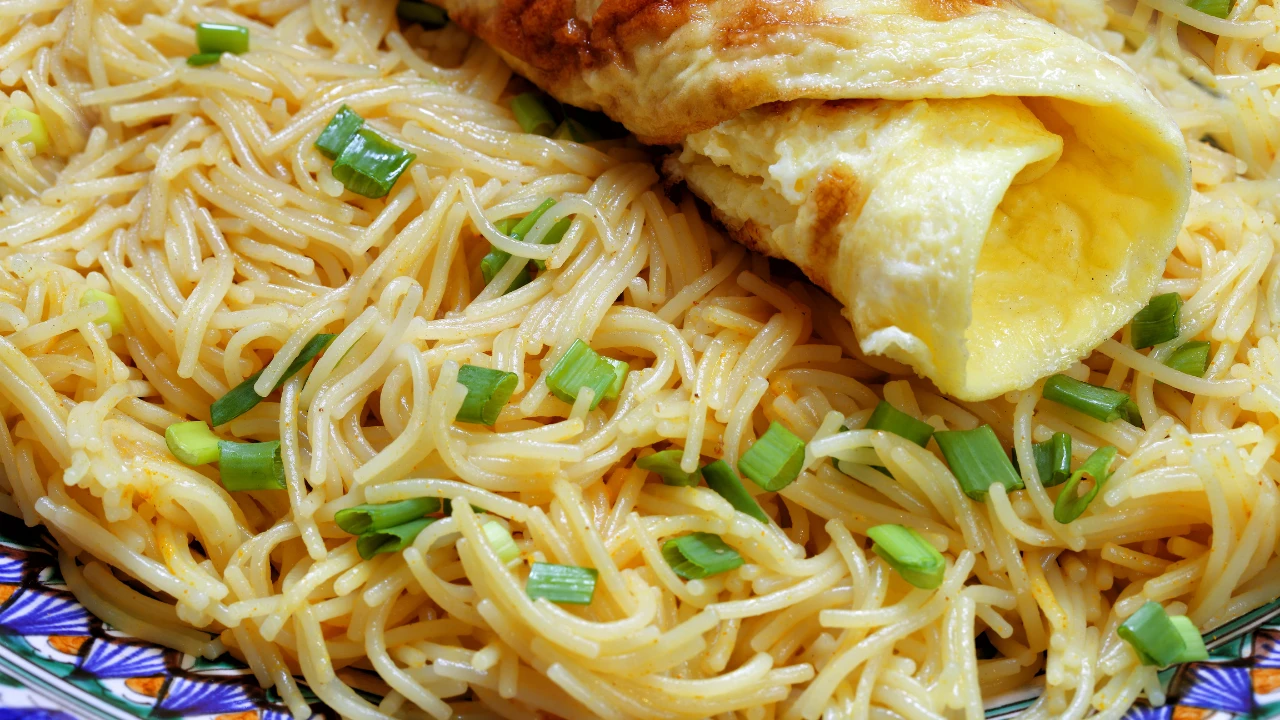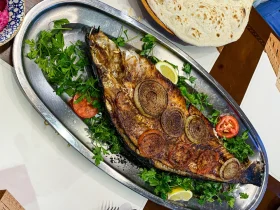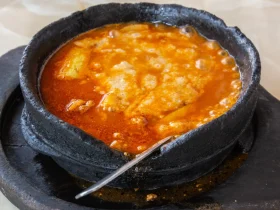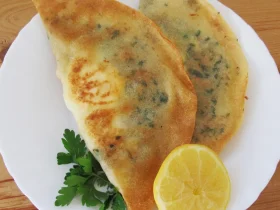Balaleet, a delightful Arabian dish, is not just a recipe; it’s a cultural treasure that has woven its way through the tapestry of Arabian cuisine. This unique blend of vermicelli and eggs has a history as rich and diverse as the flavors it brings to the table.
History
Introduction
Balaleet, a delightful Arabian dish, is not just a recipe; it’s a cultural treasure that has woven its way through the tapestry of Arabian cuisine. This unique blend of vermicelli and eggs has a history as rich and diverse as the flavors it brings to the table.
Origins
The origins of Balaleet can be traced back to the Arabian Peninsula, where it emerged as a dish steeped in tradition and hospitality. Historically, it was a staple in Bedouin households, showcasing the resourcefulness of using simple ingredients to create a flavorful and satisfying meal.
Cultural Significance
Balaleet is not just a dish; it’s a symbol of hospitality and celebration in Arabian culture. It is often served during special occasions, family gatherings, and festive events. The act of sharing Balaleet is a gesture of warmth and generosity, inviting guests to partake in a culinary experience that goes beyond the palate.
Evolution of the Recipe
Over the centuries, Balaleet has undergone subtle yet significant changes, adapting to the taste preferences of different regions. The core ingredients of vermicelli and eggs remain constant, but variations in sweetness, spice levels, and accompaniments reflect the diverse culinary landscape of the Arabian world.
Traditional Preparation Methods
In the early days, Balaleet was prepared over open fires in the heart of Bedouin tents. The vermicelli was cooked in communal pots, while the eggs were beaten with sugar and spices. This communal cooking process not only contributed to the dish’s unique flavor but also fostered a sense of community and togetherness.
Balaleet in Literature and Media
The cultural significance of Balaleet extends beyond the dining table and into literature and media. This delectable dish has found its way into the pages of traditional Arabian literature, often described in poetic terms that capture the essence of its taste and cultural importance. In modern times, Balaleet has also made appearances in popular media, showcasing its enduring appeal and adaptability.
Global Recognition
As the world becomes more interconnected, Balaleet has transcended its cultural roots and gained recognition on a global scale. Social media platforms, food blogs, and culinary enthusiasts from around the world have embraced Balaleet, contributing to its status as a beloved dish with universal appeal.
Preserving Tradition in Modern Times
In the face of globalization and changing culinary trends, efforts are being made to preserve the traditional preparation methods of Balaleet. Cultural organizations and passionate chefs are working to ensure that this cherished dish continues to be passed down through generations, maintaining its authenticity and connection to Arabian heritage.
Time
| Step | Time |
|---|---|
| Preparing the Vermicelli | 10 minutes |
| Cooking the Egg Mixture | 15 minutes |
| Combining the Components | 8 minutes |
| Total Cooking and Preparation Time | 33 minutes |
Ingredients
| Ingredient | Quantity for 2 Persons |
|---|---|
| Vermicelli | 1 cup |
| Eggs | 4 |
| Sugar | 2 tablespoons |
| Cardamom | 1/2 teaspoon |
| Ghee | 2 tablespoons |
| Salt | A pinch |
Directions
1. Preparing the Vermicelli:
- Bring a pot of water to a boil.
- Add the vermicelli and cook until it reaches an al dente texture.
- Drain the vermicelli and set it aside.
2. Cooking the Egg Mixture:
- In a bowl, whisk together four eggs, two tablespoons of sugar, half a teaspoon of cardamom, and a pinch of salt.
- Heat two tablespoons of ghee in a pan.
- Pour the egg mixture into the pan and cook until the eggs are set but still moist.
3. Combining the Components:
- Add the cooked vermicelli to the pan with the egg mixture.
- Gently toss the ingredients together until they are well combined.
- Continue cooking for an additional few minutes to allow the flavors to meld.
4. Serving the Balaleet:
- Plate the Balaleet, ensuring an even distribution of vermicelli and egg mixture.
- Garnish with your choice of roasted nuts for added texture and flavor.
- Consider serving Balaleet with a side of yogurt for a traditional touch.
5. Enjoying Your Culinary Creation:
- Take a moment to appreciate the aroma and visual appeal of your Balaleet.
- Savor each bite, allowing the harmonious blend of sweet and savory flavors to dance on your palate.
- Share this delightful dish with family and friends, creating lasting memories around the dining table.
By following these clear and concise directions, you’ll master the art of preparing Balaleet, a dish that not only satisfies your appetite but also transports you to the heart of Arabian culinary tradition.
Equipment Required
Nutrition Information
| Nutrient | Amount per Serving |
|---|---|
| Serving Size | 1 plate (Approx. 250g) |
| Calories | 320 |
| Total Fat | 12g |
| Saturated Fat | 6g |
| Trans Fat | 0g |
| Cholesterol | 200mg |
| Sodium | 180mg |
| Total Carbohydrates | 40g |
| Dietary Fiber | 2g |
| Sugars | 12g |
| Protein | 14g |
Tips
1. Choose Thin Vermicelli: Opt for thin vermicelli for a delicate and pleasing texture in your Balaleet.
2. Adjust Sugar and Cardamom Levels: Balaleet’s sweetness and spiciness can be adjusted according to your taste preferences. Feel free to experiment with sugar and cardamom quantities.
3. Use Quality Ingredients: The quality of ingredients, especially the eggs and cardamom, can significantly impact the flavor. Choose fresh, high-quality ingredients for the best results.
4. Avoid Overcooking the Eggs: To maintain a moist and delightful texture, avoid overcooking the eggs. Cook until they are just set.
5. Fully Drain Vermicelli: Ensure the vermicelli is fully drained after boiling to prevent any excess water from diluting the flavors.
6. Garnish Creatively: Experiment with different garnishes. Roasted nuts add a delightful crunch, while fresh herbs can bring a burst of freshness.
7. Try Savory Variations: Explore the savory side of Balaleet by adding spices like cumin or coriander. This variation offers a different flavor profile for those who prefer a less sweet option.
8. Serve with Traditional Accompaniments: Balaleet is traditionally served with yogurt. The tanginess of yogurt complements the sweetness of the dish, creating a well-balanced combination.
9. Individual Portions for Stylish Presentation: Consider serving Balaleet in individual portions for a stylish and modern presentation, especially if you’re entertaining guests.
10. Whole Wheat Vermicelli Option: For a healthier twist, use whole wheat vermicelli. It adds a nutty flavor and boosts the nutritional content of the dish.
11. Add Vegetables for Color and Nutrition: Enhance the nutritional value by adding finely chopped vegetables to the egg mixture. Bell peppers or spinach can bring both color and nutrients to the dish.
12. Share Your Balaleet Creations: Join the online community and share your Balaleet variations on social media. Discover unique twists and get inspired by other culinary enthusiasts.
Pros & Cons
| Pros | Cons |
|---|---|
| ✔️ Cultural Delight: Balaleet is a dish deeply rooted in Arabian culture, providing a rich culinary experience that connects to traditions and celebrations. | ❌ High Calorie Content: Due to the inclusion of eggs and ghee, Balaleet can be relatively high in calories, making it a less suitable option for those on a strict calorie-controlled diet. |
| ✔️ Versatility: Balaleet can be adapted to suit different preferences, with variations ranging from sweet to savory, allowing for a customized culinary experience. | ❌ Sugary Element: The sweet version of Balaleet may not be suitable for those with dietary restrictions on sugar or individuals aiming to minimize sugar intake. |
| ✔️ Balanced Nutrients: The dish combines eggs, vermicelli, and spices, offering a balance of proteins, carbohydrates, and fats in one flavorful package. | ❌ Not Suitable for Vegans: Balaleet, being an egg-based dish, is not suitable for individuals following a vegan diet. |
| ✔️ Social and Family Connection: Balaleet is often served during special occasions, fostering a sense of togetherness and community around the dining table. | ❌ Time-Consuming Preparation: The intricate preparation process, including boiling vermicelli and cooking the egg mixture, may not be suitable for those seeking quick and easy recipes. |
| ✔️ Global Appeal: Balaleet’s popularity has transcended its cultural origins, gaining recognition and appreciation on a global scale. | ❌ Not Gluten-Free: Traditional Balaleet uses wheat-based vermicelli, making it unsuitable for individuals with gluten sensitivities or celiac disease. |
Conclusion
In the tapestry of culinary delights, Balaleet stands out as a gem that seamlessly weaves together tradition, flavor, and cultural richness. This Arabian dish, with its delicate balance of sweet and savory notes, invites you on a journey through time and taste.
As you explore the pros of Balaleet—its cultural significance, versatility, balanced nutrients, social connections, and global appeal—you’ll discover a dish that goes beyond being a mere recipe. Balaleet is a celebration of flavors, a bridge between the past and present, and an invitation to join the global community in savoring its unique charm.
While there are considerations to keep in mind, such as the calorie content, sugary element, and preparation time, the rewards far outweigh the challenges. Balaleet offers more than a meal; it offers an experience—a connection to heritage, an opportunity to experiment with flavors, and a chance to create lasting memories with loved ones.
So, why not embark on a culinary adventure and try your hand at preparing Balaleet? Whether you choose the sweet or savory variation, adapt it to your taste preferences, or put your creative spin on the presentation, each bite will transport you to the heart of Arabian culinary tradition.
In the spirit of exploration, cultural appreciation, and the joy of shared meals, Balaleet awaits your culinary prowess. Gather the ingredients, follow the steps with enthusiasm, and embrace the delight that comes with every plate of Balaleet. Your taste buds will thank you for the journey, and your dining table will become a canvas for creating beautiful, flavorful memories.
Facts
- 1. 🌍 Globally Loved Tradition:
- Fact: Balaleet has transcended its cultural origins and gained global popularity. It’s not just a dish; it’s a culinary ambassador that has found its way into kitchens around the world.
- 2. 🎭 Theatrics in Preparation:
- Fact: In traditional Bedouin preparation, Balaleet is often cooked over open fires in large communal pots, creating a spectacle of flavors and fostering a sense of community.
- 3. 📜 Poetic Presence:
- Fact: Balaleet isn’t just celebrated on plates; it graces the pages of traditional Arabian literature, where it’s often described poetically, capturing the essence of its taste and cultural significance.
- 4. 🔄 Evolution of Flavors:
- Fact: Over the centuries, Balaleet has evolved with subtle variations to suit diverse tastes. From sweet to savory, each adaptation tells a story of culinary innovation.
- 5. 🌱 Nutrient-Rich Symbol:
- Fact: Balaleet isn’t just a treat for the taste buds; it offers a balance of nutrients. With eggs, vermicelli, and spices, it weaves a tapestry of flavors and nourishment.
FAQ’s
Can I use whole wheat vermicelli for a healthier version of Balaleet?
Absolutely! Whole wheat vermicelli can be a nutritious alternative, adding a nutty flavor to the dish.
Can I substitute ghee with another cooking oil?
While ghee adds a distinct flavor, you can use a neutral cooking oil if you prefer a lighter taste.
Is Balaleet commonly served for breakfast or dinner?
Balaleet is versatile and can be enjoyed for both breakfast and dinner, depending on personal preference.
Can I add vegetables to Balaleet for extra nutrition?
Certainly! Feel free to experiment with adding finely chopped vegetables for a colorful and nutrient-rich twist.
Is Balaleet suitable for vegetarians?
Yes, Balaleet can be a vegetarian dish by omitting the eggs or using egg substitutes.
How do I prevent the eggs from becoming too dry when cooking Balaleet?
Avoid overcooking the eggs. Cook them until they are set but still moist for a delightful texture.
Can I prepare Balaleet in advance and reheat it later?
While it’s best enjoyed fresh, you can refrigerate Balaleet and reheat it gently, but be mindful of potential texture changes.
What are some creative garnishes for Balaleet?
Experiment with roasted nuts for added crunch or fresh herbs for a burst of freshness. Get creative to enhance visual appeal.
Can I use a different type of spice instead of cardamom in Balaleet?
Absolutely! Feel free to experiment with spices like cinnamon or nutmeg for a unique flavor profile.
How do I adjust the sweetness of Balaleet to my liking?
You can easily adjust the sweetness by varying the amount of sugar in the egg mixture. Start with the suggested amount and taste as you go.












Leave a Review